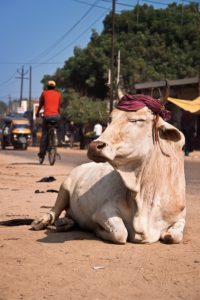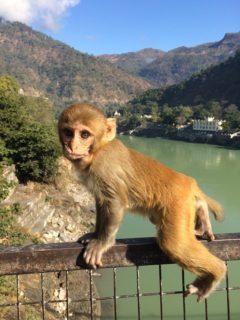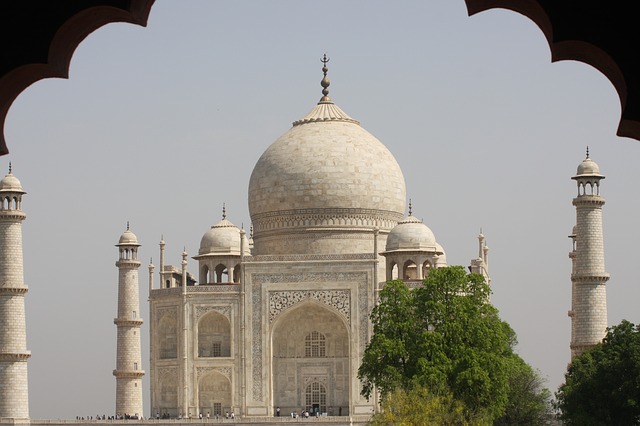
An India visa is your ticket to a cornucopia of wonders: the Taj Mahal. Sunrise over the Ganges. The colored-powder fights of Holi and the sparkling lights of Diwali. Tigers in the wilds, monkeys in the cities, and birds everywhere. The hustle of downtown Delhi. The calm of the ashram. And curry. REAL curry, unlike anything you’ve tasted before. You can only experience these things in India, and you can only visit India if you have a valid Indian visa in advance of your trip. The India Visa process can be complicated so we also recommend using a trusted visa expediting service to help you through the process and prevent common mistakes that can delay your visa.
Types of India Visa
Most travelers to India will need either a tourist or business visa. In addition to those basic visa types, India also offers visa options for other categories of travelers, such as students, journalists, researchers, missionaries, medical patients, and people who will be employed in India. There is even a special type of conference visa issued to people who will attend a conference organized by an Indian government agency or public university!
In our article today, we’ll focus on business and tourist visas, as this is what you are most likely to need for your visit to India.
Consular Visa or Electronic Visa?
Business visitors and tourists have two options for getting an India visa. You can either apply for a traditional visa issued at an Indian consulate, or you can get an electronic visa issued online.
Electronic visas for India are a relatively new option, only available within the last few years. The electronic India visa is known as the “eTourist Visa,” but it can be used for casual business visits as well as tourism, visiting friends or family, or undergoing short-term medical treatment. It’s a convenient option because you don’t need to send off your passport, but you’ll need to abide by these conditions:
- The visa is valid for one entry only.
- You can stay no longer than 30 days.
- You must enter India through one of 16 approved airports, including Delhi, Mumbai, and Kolkata.
- You must apply between 4 to 30 days before your entry date to India.
- If you are traveling for business, you can’t sign legal documents or contracts, go to court, or conduct other official business. You are only able to do things like attend meetings, do site visits, or go a trade show.
Consular visas, which are applied to your passport book, are more expensive than eTourist visas. However, they offer the following advantages:
- You can enter India multiple times. All business and tourist visas issued by the consulates in the US are multiple entry visas.
- You can stay a longer time, often up to 180 days.
- You can enter India anywhere – by land, by sea, or at any airport.
- You can sign contracts or do other official business.
- You can use your India visa over a longer time period, up to 10 years.
Applying for Your India Visa
 Whether you are applying for an eTourist visa or a consular visa, the first step in getting your India visa is to fill out an online visa application. Your eTourist visa will be submitted completely online through this Indian government website. If you are applying for a longer-term visa through a consulate, you will need to print out your completed application and sign it on both the first and second pages.
Whether you are applying for an eTourist visa or a consular visa, the first step in getting your India visa is to fill out an online visa application. Your eTourist visa will be submitted completely online through this Indian government website. If you are applying for a longer-term visa through a consulate, you will need to print out your completed application and sign it on both the first and second pages.
The online India visa application is several web pages long and will ask for a lot of details about your family, profession, and residence. You will need to provide two references, one in India and one in the US. For a tourist visa, your reference in India can be a hotel, a tour operator, or a personal contact. If you need a business visa, your Indian reference should be someone at the company you are going to visit. Your reference person in the United States can be a business contact, friend, or relative… but it can’t be someone who lives with you!
If you are applying for an eTourist visa, you will also need to upload a scan of your valid passport in PDF format, and a JPG digital image of a passport-style photo of you.
Many travelers find the India online application challenging. The questions need to be answered in a very specific way — especially if you are applying for a consular visa — and some of the wording may be unclear. Formatting the passport scan and photo to upload to the eTourist application may be difficult for travelers who aren’t computer-savvy or don’t have graphics or PDF programs on their computers. If you’d like extra help with your India application, consider using G3 Global Services to get your India visa. They provide Concierge Service with every India visa request, and they’ll give you an easy questionnaire to fill out. An India visa specialist will then use your answers on the questionnaire to complete your India online application for you.
Where are India Visas Issued?
 India maintains one Embassy and five Consulates General in the United States. If you apply for a consular visa to be stamped into your passport, it will be issued by one of these six locations. India, like many of the other countries we’ve featured, enforces consular jurisdiction. You’ll need to have your visa processed by the consulate that is in charge of the state where you live. You’ll have to prove which state you live in by submitting a copy of your driver’s license.
India maintains one Embassy and five Consulates General in the United States. If you apply for a consular visa to be stamped into your passport, it will be issued by one of these six locations. India, like many of the other countries we’ve featured, enforces consular jurisdiction. You’ll need to have your visa processed by the consulate that is in charge of the state where you live. You’ll have to prove which state you live in by submitting a copy of your driver’s license.
The consular jurisdictions are:
Atlanta Consulate: Alabama, Florida, Georgia, Mississippi, Puerto Rico, South Carolina, Tennessee, US Virgin Islands
Chicago Consulate: Illinois, Indiana, Iowa, Michigan, Minnesota, Missouri, North Dakota, South Dakota, Wisconsin
Houston Consulate: Arkansas, Colorado, Kansas, Louisiana, Nebraska, New Mexico, Oklahoma, Texas
New York Consulate: Connecticut, Maine, Massachusetts, New Hampshire, New Jersey, New York, Ohio, Pennsylvania, Rhode Island, Vermont
San Francisco Consulate: Alaska, Arizona, California, Hawaii, Idaho, Montana, Nevada, Oregon, Utah, Washington, Wyoming
Washington, DC Embassy: Delaware, District of Columbia, Kentucky, Maryland, North Carolina, Virginia, West Virginia

What is “Visa Outsourcing”?
Although your consular visa for India will be issued by the Embassy or the Consulate that oversees your state, you won’t actually be going to the consulate to submit your visa application. Instead, you’ll be going to a visa outsourcing office. The Indian government has contracted with a third party to run these outsourcing offices. They do the work of collecting visa applications, delivering them to the consulate for processing, and picking them up when complete. You’ll have to return to the outsourcing office to pick up your finished visa. Because the outsourcing office does the work of talking to the travelers as they submit their applications, the consulate staff is able to focus on actually processing the visas!
You might be wondering what the difference is between the visa outsourcing company and a visa expediting service. The visa outsourcing office just collects applications and distributes completed visas — they don’t actually provide guidance or assistance with the application. A visa expediting service will go to the visa outsourcing office on your behalf, so you don’t have to drive into the city or spend half your day waiting in lines!
Long Term Indian Visas
One of the best reasons for getting a consular visa for India instead of an eTourist visa is that your visa will be valid for a much longer period of time, and will allow you to make multiple journeys to India. India business visas are always valid for multiple entries, and can be be issued for one-year, five-year, or even ten-year validities. US citizens who apply for tourist visas at the consulate are issued multiple entry visas valid for ten years. (You may be granted a shorter validity if your passport is close to expiration.)
What happens if your passport expires before your India visa? Good news — you can keep traveling using the valid India visa in your cancelled or expired passport. You’ll need to carry both passports with you, and your name and biographical details must be the same in both passports.
Do you have questions about India visas? Ask us in the comments!


